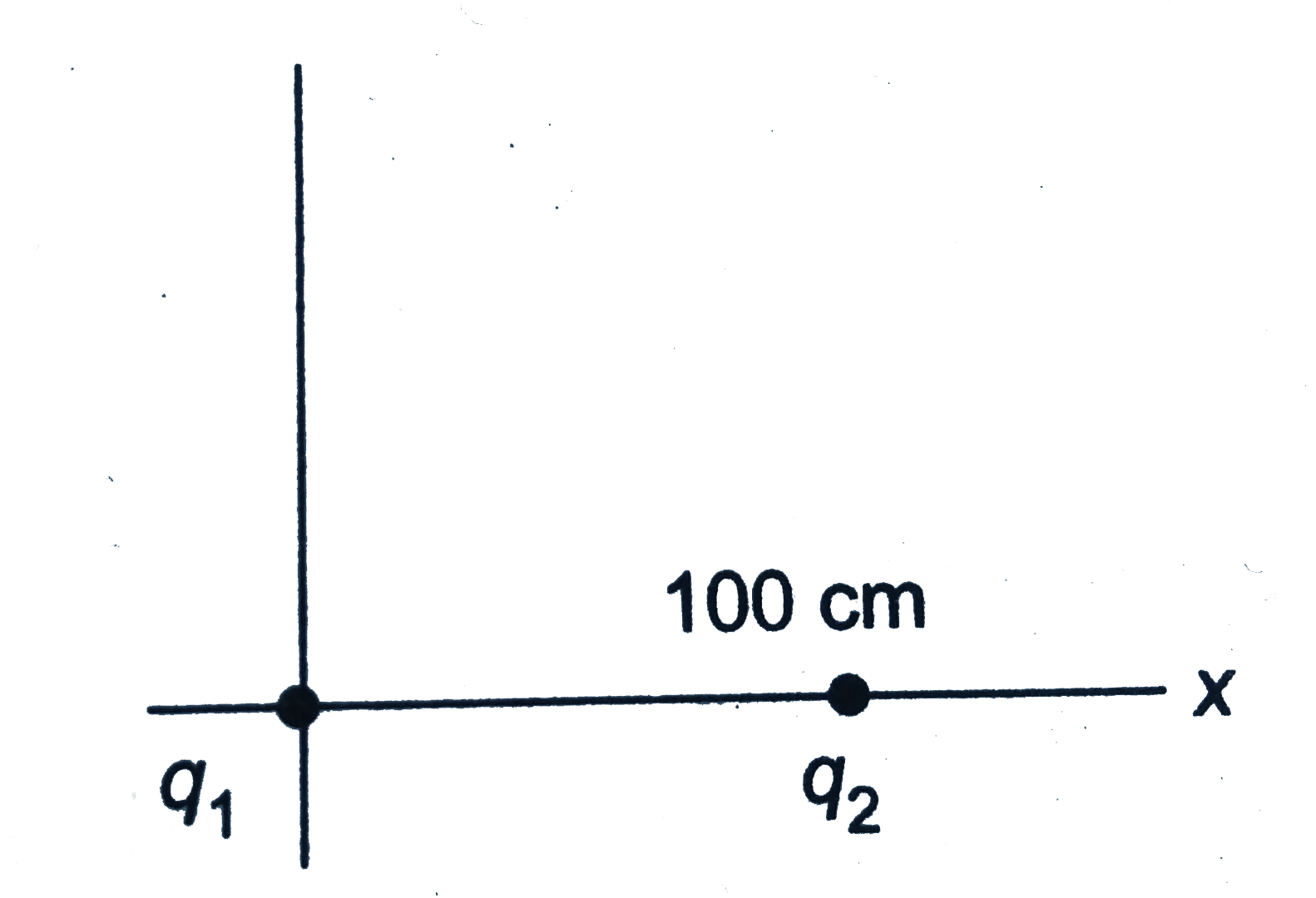A charge +2 is placed at a point A (2,1,0). Another charge is placed at a point B (4,2,-1). Calculate net force on a charge placed at a point C (-1,3,2).
If represents a vector joining the two charges along the direction of force. Then the force in vector form can be written as follows :
Notice that is the given figure the points are not shown on appropriate locations as per their coordinates . But the fact is that you do not require this , as you can work just on the basis of given coordinates . Here , you should note that the direction of and are selected as per the direction of forces and , respectively.

Now substituting the values
On solving we get
Magnitude of net force F=0.00065
=0.0022 newton
Topper's Solved these Questions
- ELECTRIC CHARGES AND FIELDS BOOK - MODERN PUBLICATIONCHAPTER - ELECTRIC CHARGES AND FIELDS EXERCISE - Practice Problems
88 Videos
- ELECTRIC CHARGES AND FIELDS BOOK - MODERN PUBLICATIONCHAPTER - ELECTRIC CHARGES AND FIELDS EXERCISE - Conceptual Questions
51 Videos
- DUAL NATURE OF RADIATION AND MATTER BOOK - MODERN PUBLICATIONCHAPTER - DUAL NATURE OF RADIATION AND MATTER EXERCISE - CHAPTER PRACTICE TEST
15 Videos
- ELECTROMAGNETIC INDUCTIONBOOK - MODERN PUBLICATIONCHAPTER - ELECTROMAGNETIC INDUCTIONEXERCISE - CHAPTER PRACTICE TEST FOR BOARD EXAMINATION
14 Videos
Similar Questions
Two charges A and B of −5μC each are placed at a separation of 20 cm . Another charge C of +3 μC is placed at a separation of 20 cm from both the charges A and B . What should be the nature and magnitude of the charge to be placed at the midpoint between A and B so that net force on charge C is zero ?
View SolutionA dipole of 2μC charges each, consists of the positive charge at the point P (1, -1) and the negative charge is placed at the point Q(-1, 1). The work done in displacing a charge of +1μC from point A(−3,−3) to B (4, 4) is
View Solution
Knowledge Check
A dipole of 2μC charges each, consists of the positive charge at the point P (1, -1) and the negative charge is placed at the point Q(-1, 1). The work done in displacing a charge of +1μC from point A(−3,−3) to B (4, 4) is
A1.6×10−19JB3.2×10−19JCzeroD4.8eVA charge of +2μC is placed at x=0 and a charge of −32μc at x=60 .A third charge −Q be placed on the x axis such that it experiences no force .The distance of the point from +2μC is ( in cm)
A−20B20C15D10
Calculate the potential at point (0, 7 cm) due to a point charge of 0.2 μC placed at (0, 2 cm).
View SolutionTwo charges +0.4μC and−0.2μC are placed on adjacent vertices of a square of side 10 cm. Another charge of 1.2μC is placed at the centre af the square Calculate the force and its direction in the charge kept in the centre .
View SolutionCharged particles of charge 0.001 μC are placed on Y-axis at points (0,1 m) (0,2 m),( 0.3 m) and so on till infinity. Find the net force on charge of 0.1μC placed at (0,0).
View SolutionTwo charges one +5μC, and another −5μC ,are placed 1 mm apart . Calculate the dipole moment.
View SolutionPoint charges of magnitude 9μC each are placed along the X-axis at x =1m , x=2m , x=4 m , x=8 m and so on till infinity . Calculate the net force experienced by a charge of 0.1 C placed at the origin.
View SolutionA point charge q1=+2μC is placed at the origin of coordinates. A second charge, q2=−3μC, is placed on the x-axis at x=100cm. At what point (or points) on the x-axis will the absolute potential be zero?

View Solution
